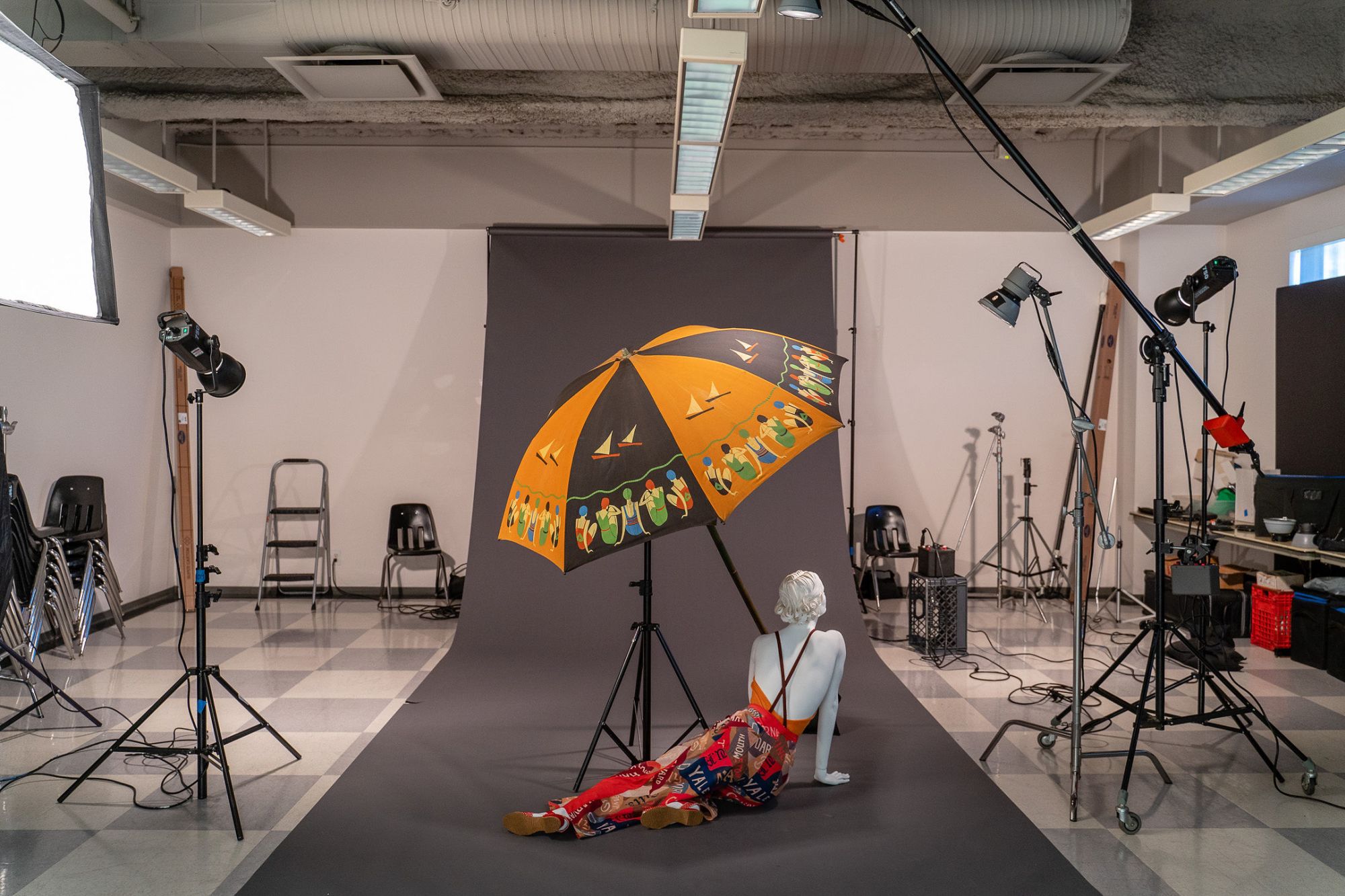Before the advent of designer activewear, women’s sportswear ranked low on the list of fashion priorities. But a new exhibition demonstrates that sporting attire has long been a valuable tool for self-expression and an important path towards greater liberation.
“Sporting Fashion: Outdoor Girls 1800 to 1960” includes about 65 ensembles from mainland Europe, the UK, and the US, ranging from Victorian hunting dresses and couture-level leisure wear to tailor-made team uniforms. Organized by the FIDM Museum at the Fashion Institute of Design & Merchandising in Los Angeles and the American Federation of Arts, the show opens at the Frick Art Museum in Pittsburgh on July 3, before touring nationwide through 2024.
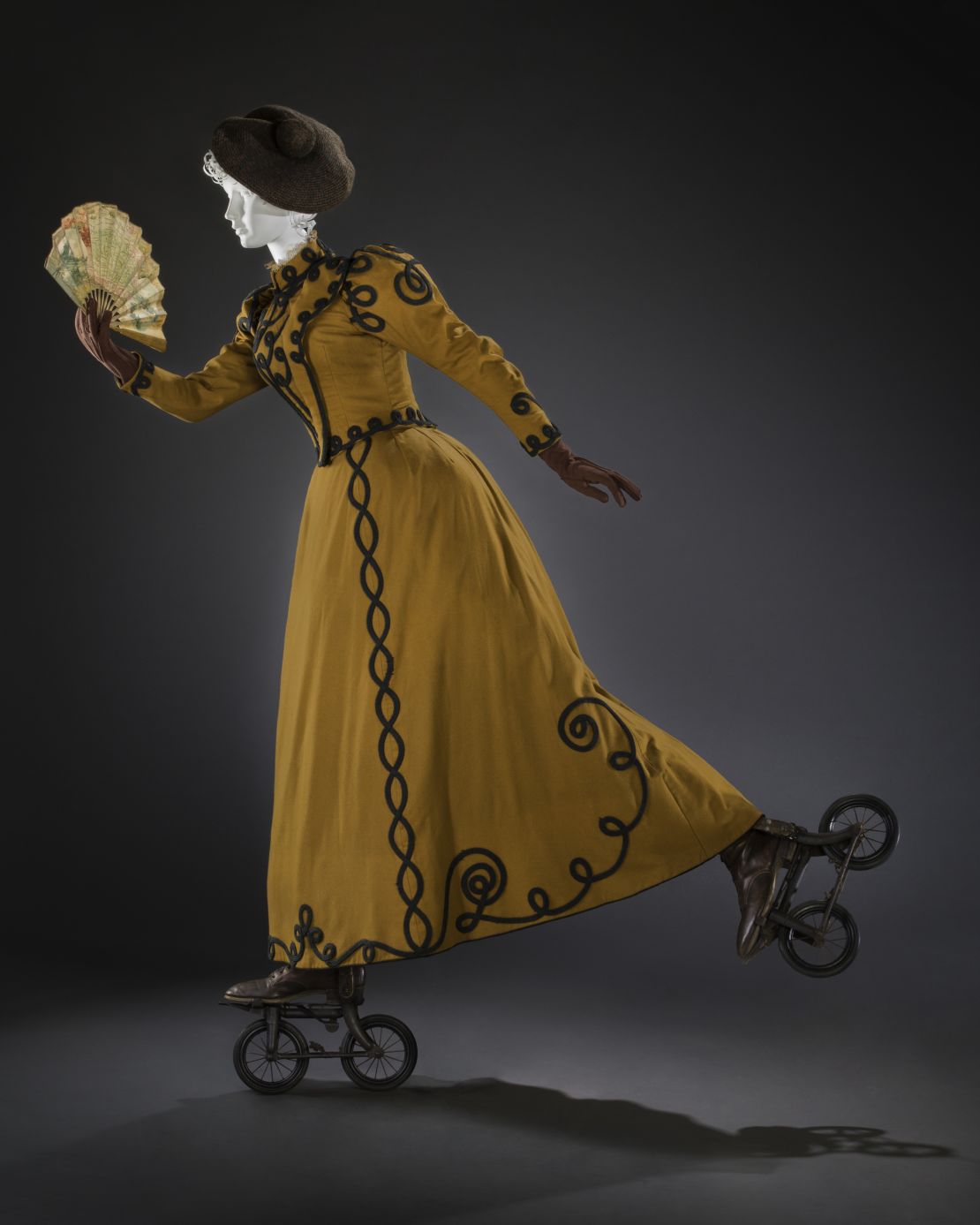
Across 160 years we see fashion adapting to the changing sartorial needs of women as sociocultural shifts made it increasingly acceptable for them to venture outdoors and engage in physical activity. “Sportswear doesn’t just drop out of the sky,” said FIDM Museum curator Kevin Jones, who organized the show together with the museum’s associate curator, Christina M. Johnson. “While we might not think of some of these ensembles as sportswear specific, this is where it started. Women were wearing fashionable dress to do outdoor activities, and as those activities expanded, they needed to figure out in their time what would be appropriate to wear.”
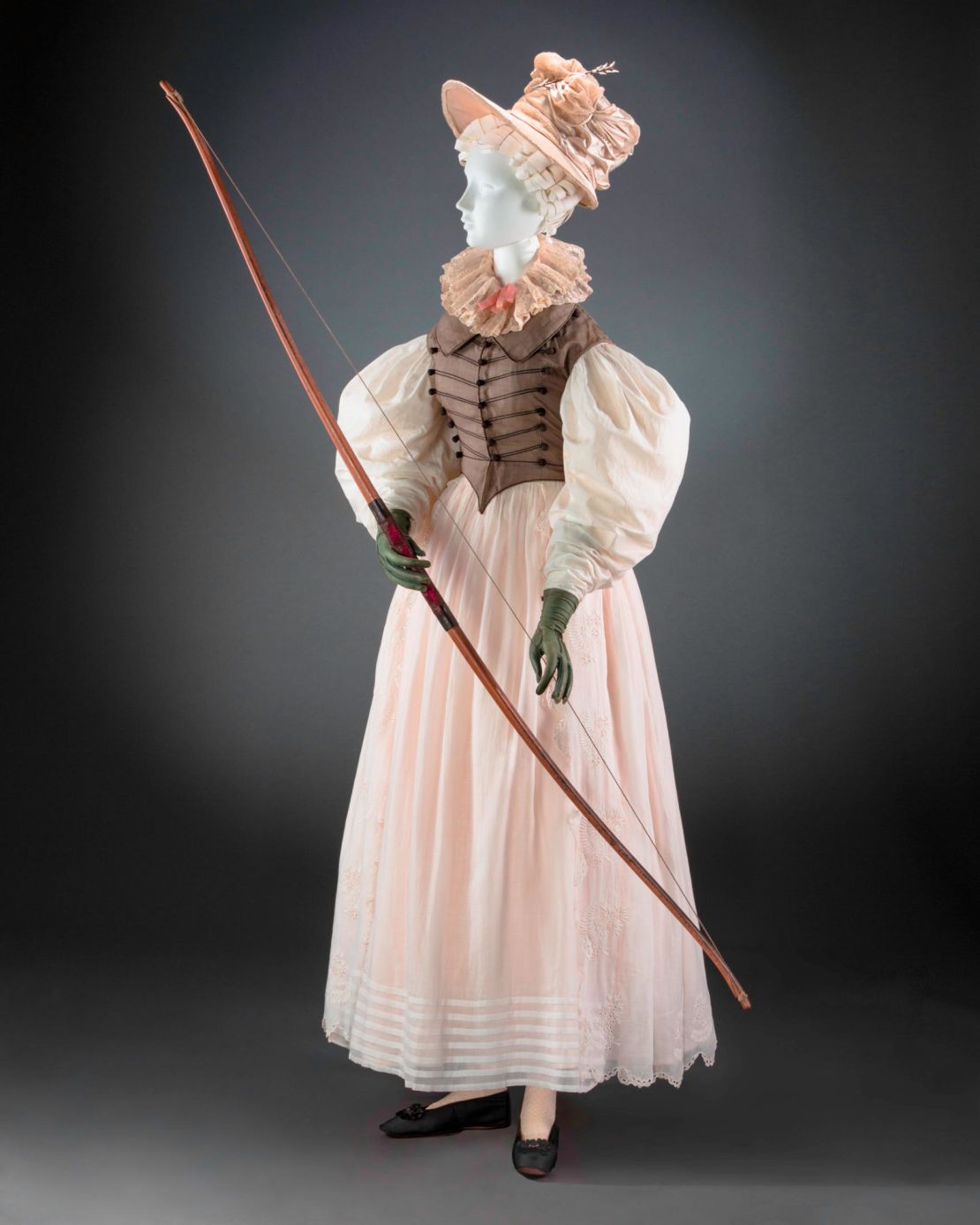
The impetus for the exhibition was a 1940s scarf that struck Jones’ eye at a vintage fashion show in Los Angeles in 2009, displaying 13 vignettes of stylish young women participating in different sporty activities, with the tag line “Outdoorgirl” snaking around each scene. He decided on the spot to do a show on the theme, and spent the next 12 years hunting for the right ensembles.
They started the show in 1800, Jones explained, because pristine examples from earlier periods were just too hard to find: “Unlike a ballgown, these garments were never meant to survive.”
Design innovation
Garments from the early 1800s are tailored to strolling in parks, gardening, and ice skating – easy, acceptable activities for women propelled outside by an interest in horticulture, health and fresh air.
The idea of a woman exerting herself was still taboo: In 1806, an article in the popular British magazine La Belle Assemblée, excerpted in the show’s comprehensive catalog, warned that, “the constitution of women is adapted only to moderate exercise; their feeble arms cannot perform work too laborious and too long continued, and the graces cannot be reconciled with fatigue and sun-burning.”
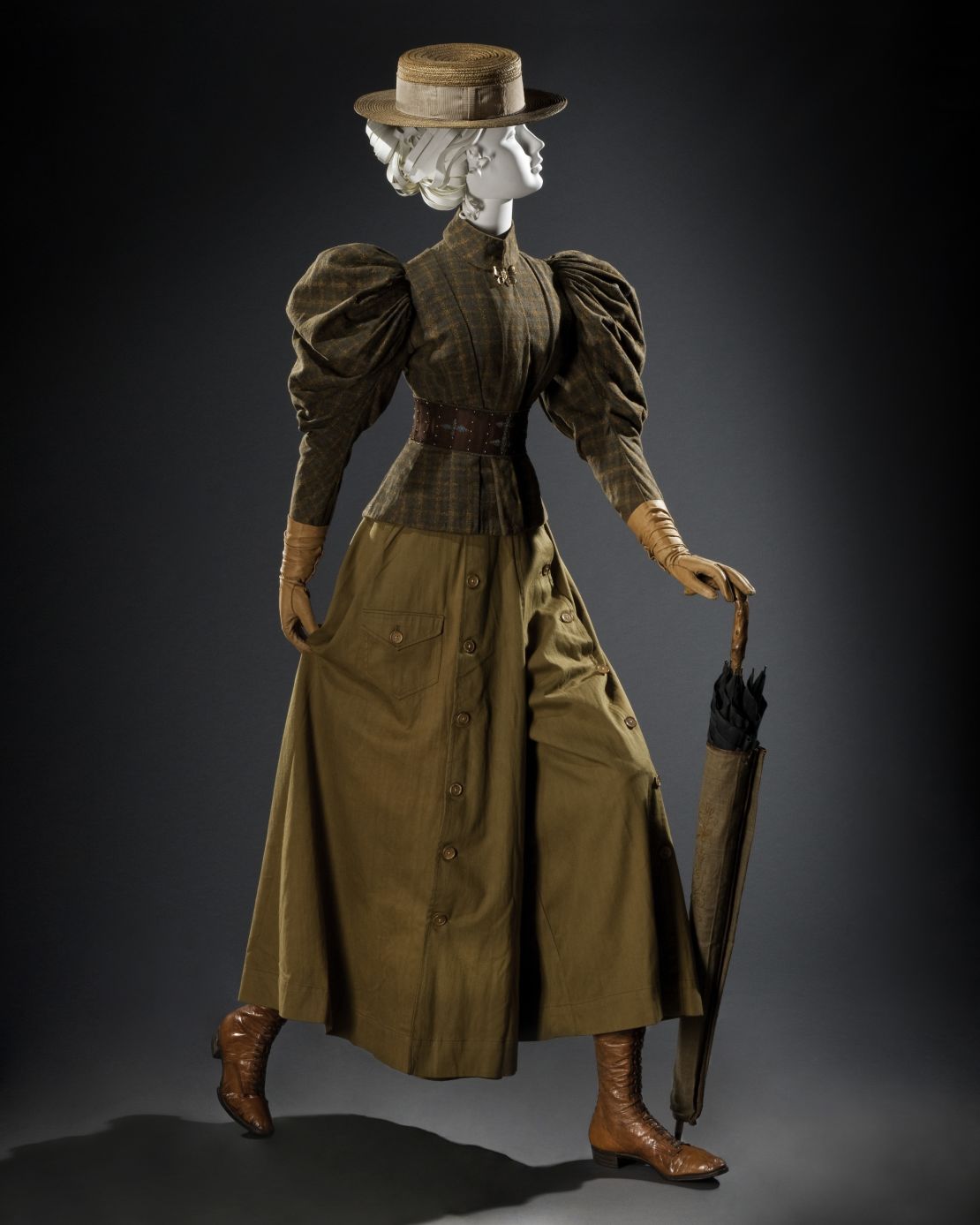
Decency codes long prevented women from showing skin and body contours (too suggestive), as well as from dressing like men (too threatening). But we see some particularly creative workarounds on show: Progressive fashion reformers in the late 1800s invented a subtly divided skirt – like a looser culotte – for mountaineering; while a houndstooth riding jacket from 1912 could be paired with a matching apron skirt, should the wearer choose to ride sidesaddle, or baggy breeches, which afforded some modesty when riding astride.
The solutions for bathing were equally innovative, if wildly cumbersome. A rare personal changing tent, patented around 1900s, for instance, would have been quickly put on by a woman as she emerged from the water to prevent onlookers from seeing the contours of form beneath her wet garments.
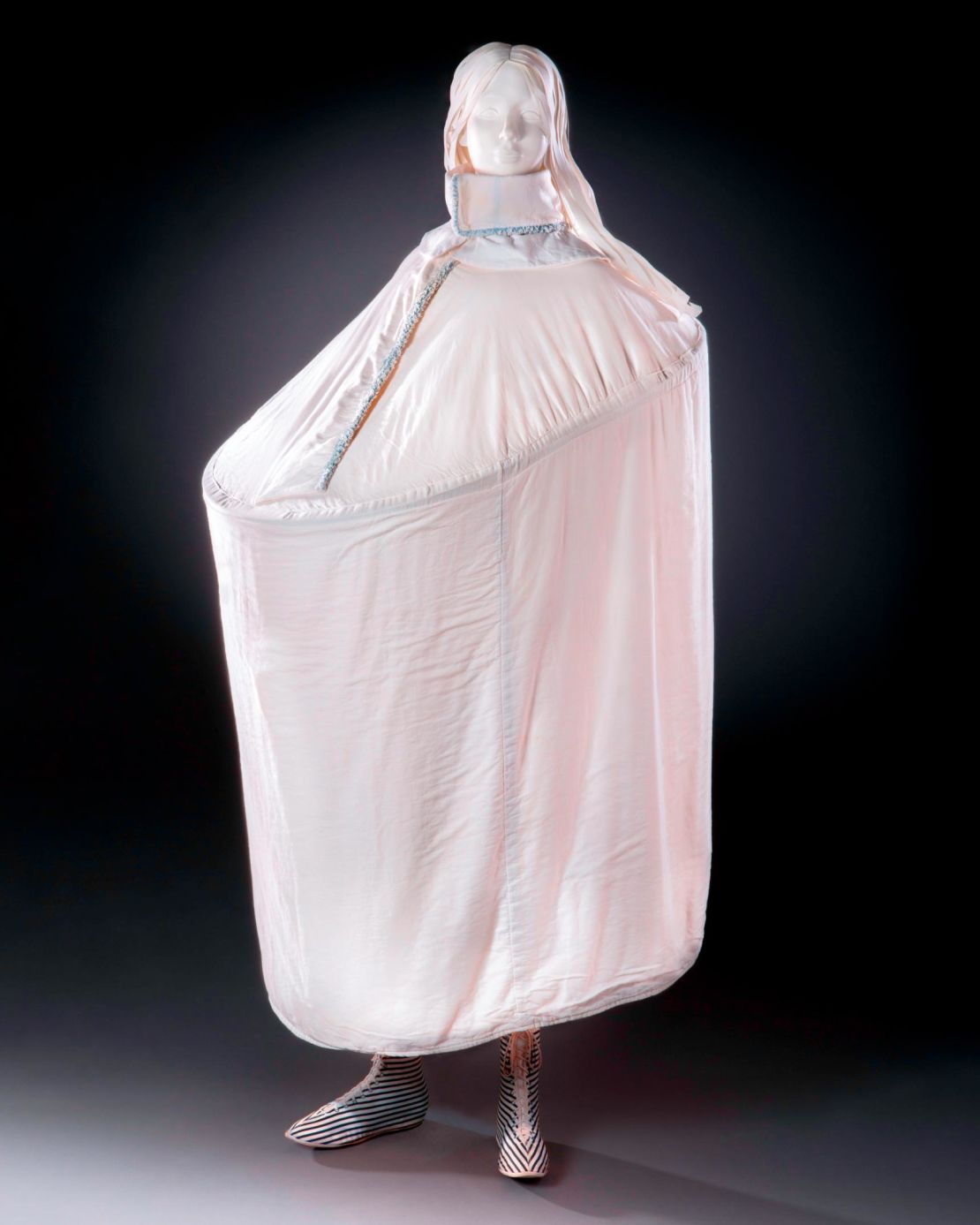
In much of the West, it was considered indecent, if not illegal, for women to wear pants until the early 1900s, and they weren’t worn with much frequency until the 1920s, when designers like Coco Chanel and Jean Patou (who both have pieces in “Sporting Fashion”) made them fashionable. Around the same time, cultural shifts led to rising hem lengths, as well as bare legs and backs. Hollywood was partly responsible, Jones said, but so was WWI: “After World War I and the Spanish flu pandemic, an entire generation of men were killed off, so what you had left were very youthful people,” he explains. “That is reflected in fashion.”
Textile technology
The prosperity that followed World War II would open a world of bowling teams, cheerleading squads, and motorbike riding on President Eisenhower’s new highways.
“By the time you get to the 1960s,” Jones explained, “the garment types that women wore as spectators or for athletic use had already been designed. What changed after that is the textile technology.”
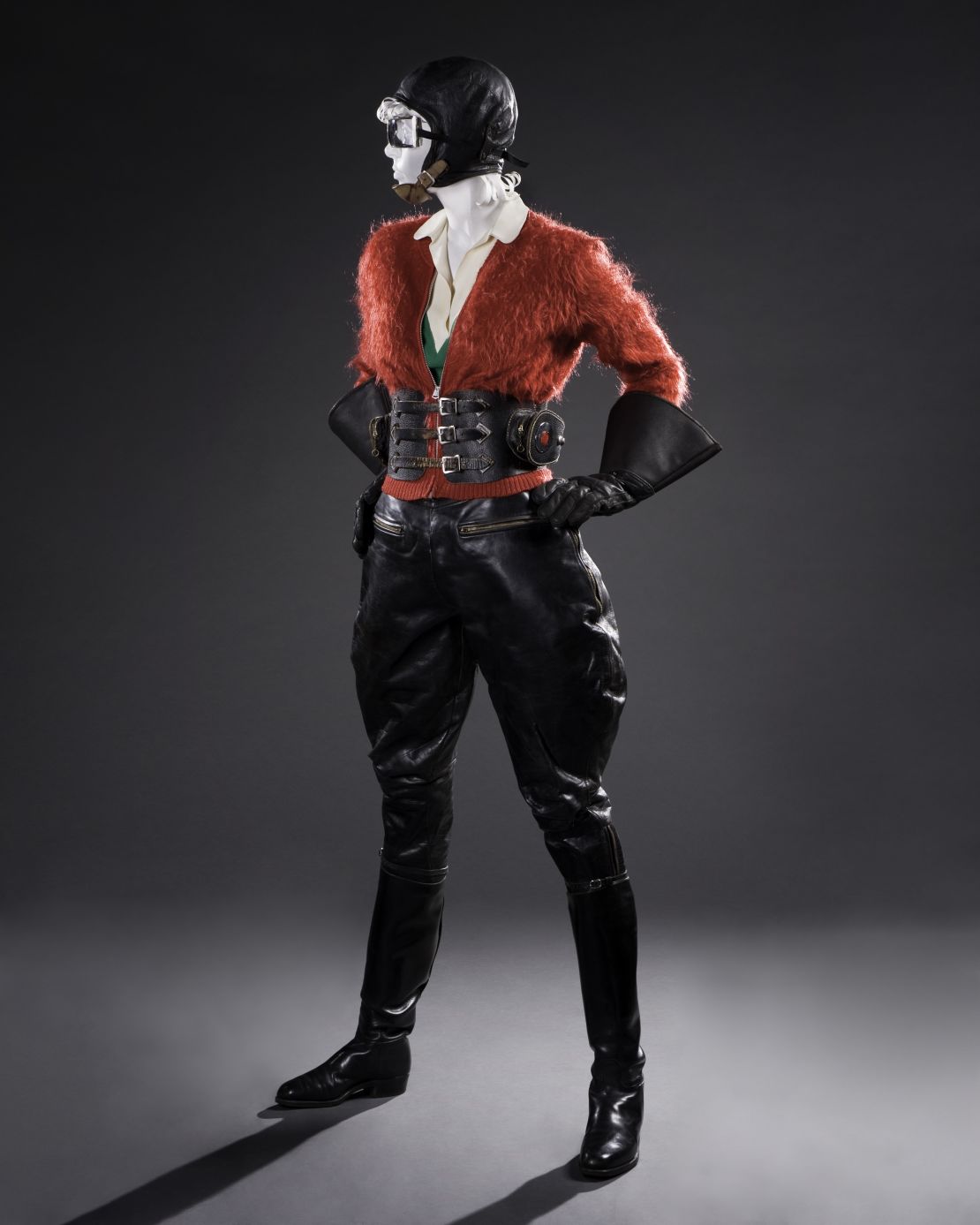
But that’s to say that technological advances weren’t instrumental along the way. Knitted wool corsets, Jones points out, were far more flexible than their bone- or metal-reinforced predecessors. Similarly, when women started bearing more skin, lightweight machine knits became essential for bathing suits, as we see in a black one-piece from the 1920s made by the American swimwear brand Jantzen, which got its start making sweaters. Meanwhile, a 1930s swimsuit designed by Cole of California was made from a mix of latex woven with cotton, which allowed for a more flexible fit.
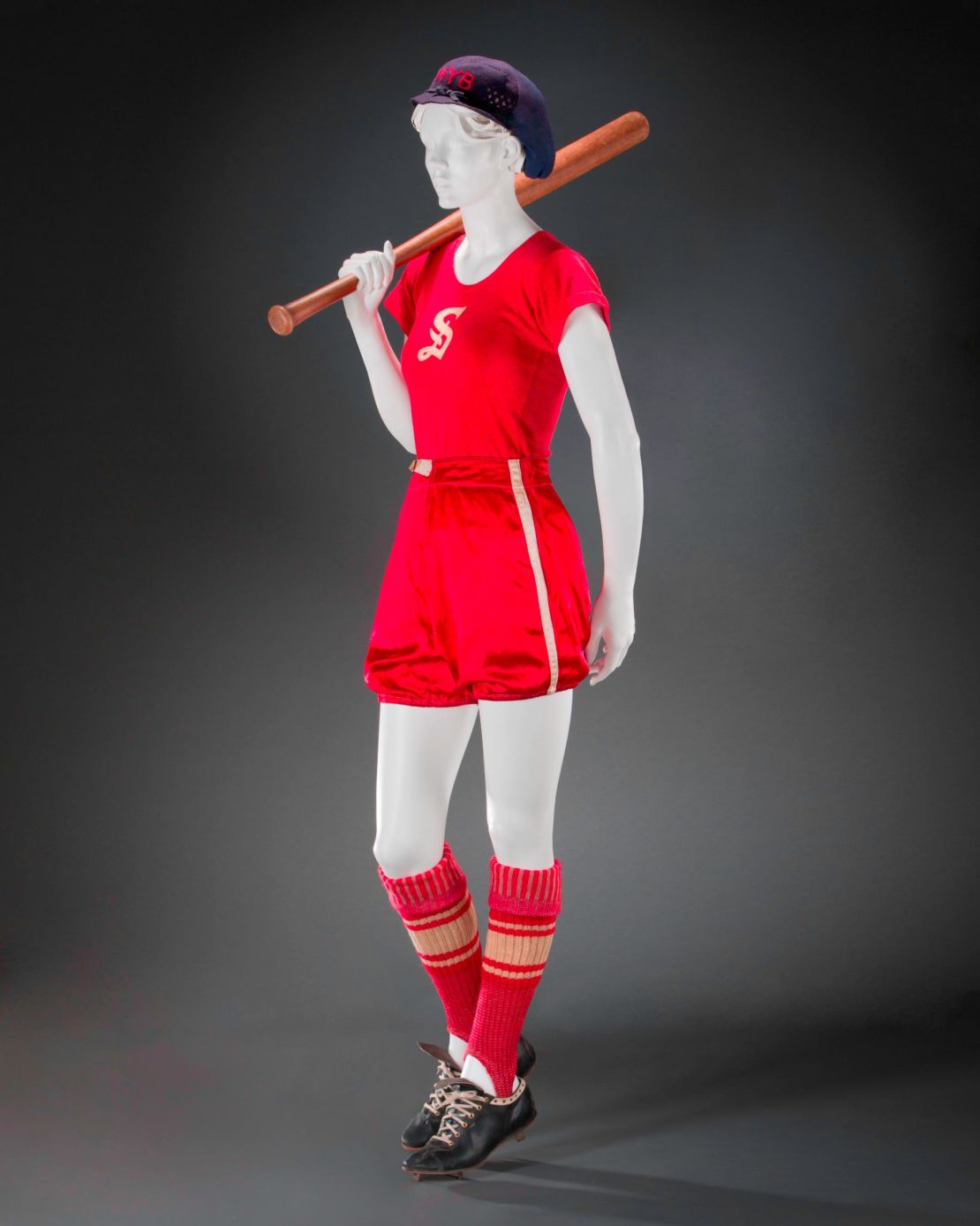
“[Knitwear has] existed for hundreds of years, but the types of garments we see as women were needing more ability was really a matter of experimentation and entrepreneurial innovation,” Jones explained.
What’s most surprising about the exhibition, perhaps, is that some of these athletic outfits existed as early as they did, like an 1890s cricket ensemble or a 1910s basketball team uniform. “If a man was doing something and there was a woman who was interested in doing it, I guarantee she was figuring out a way (to do so), and also what to wear while doing it,” Jones said. She also had to figure out a way to obtain the garment: “The basketball uniform was likely made on commission by an itinerant seamstress,” said Jones.
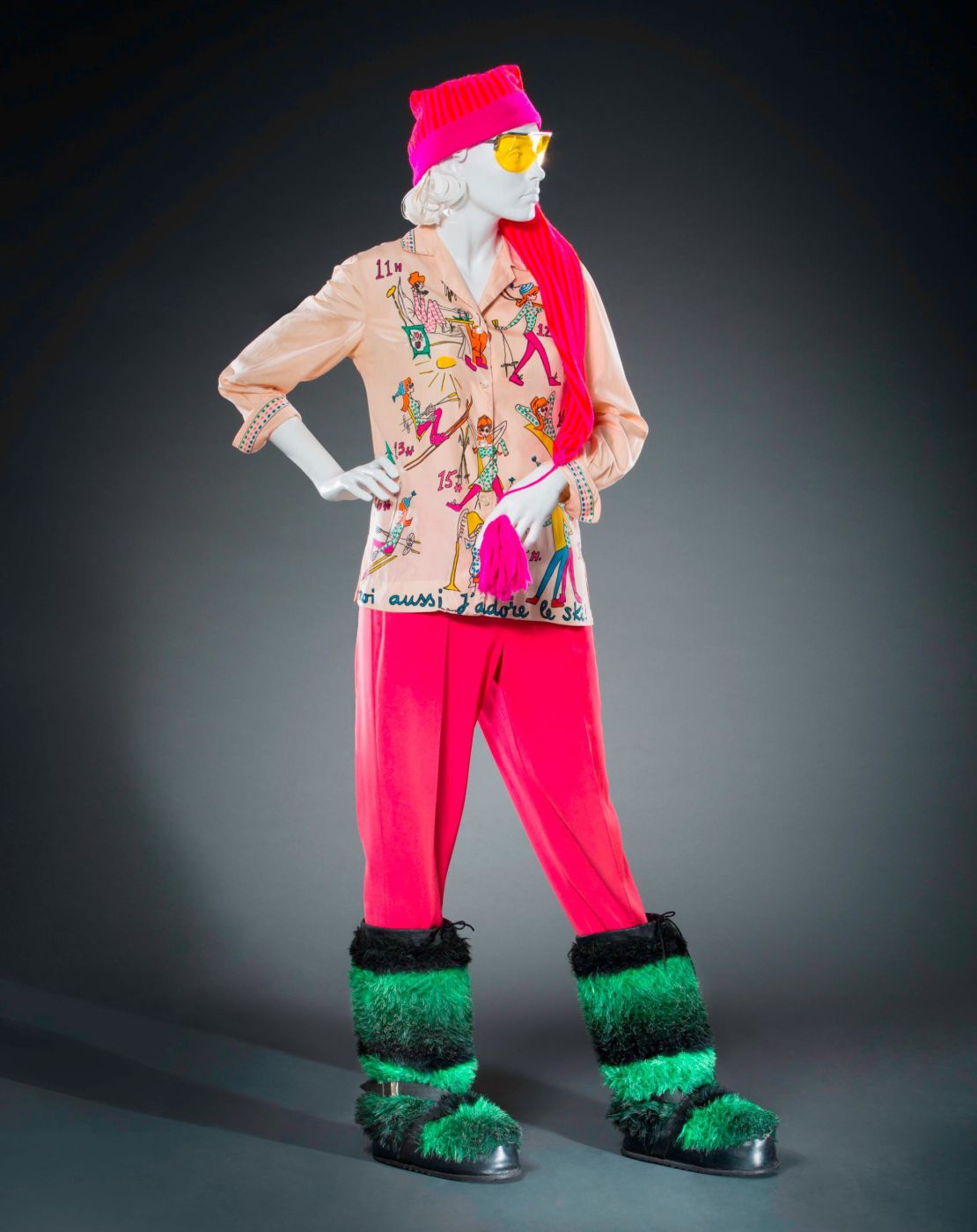
It’s hard not to notice that most of this attire belonged to well-heeled White women who had the leisure time to wear it and the means to purchase it. But as tennis superstar and style icon Serena Williams observes in an introductory essay for the catalog, clothing, which once restricted women in their athletic pursuits, can be seen as a “tool to empower female athletes, to give them a form of self-expression and individuality in a world that historically belonged to men.”
If it’s a driving force in fashion, sportswear, it turns out, is also a great democratizer.
“Sporting Fashion: Outdoor Girls 1800 to 1960” is on at the Frick Art Museum in Pittsburgh from July 3, 2021 to September 26, 2021.
